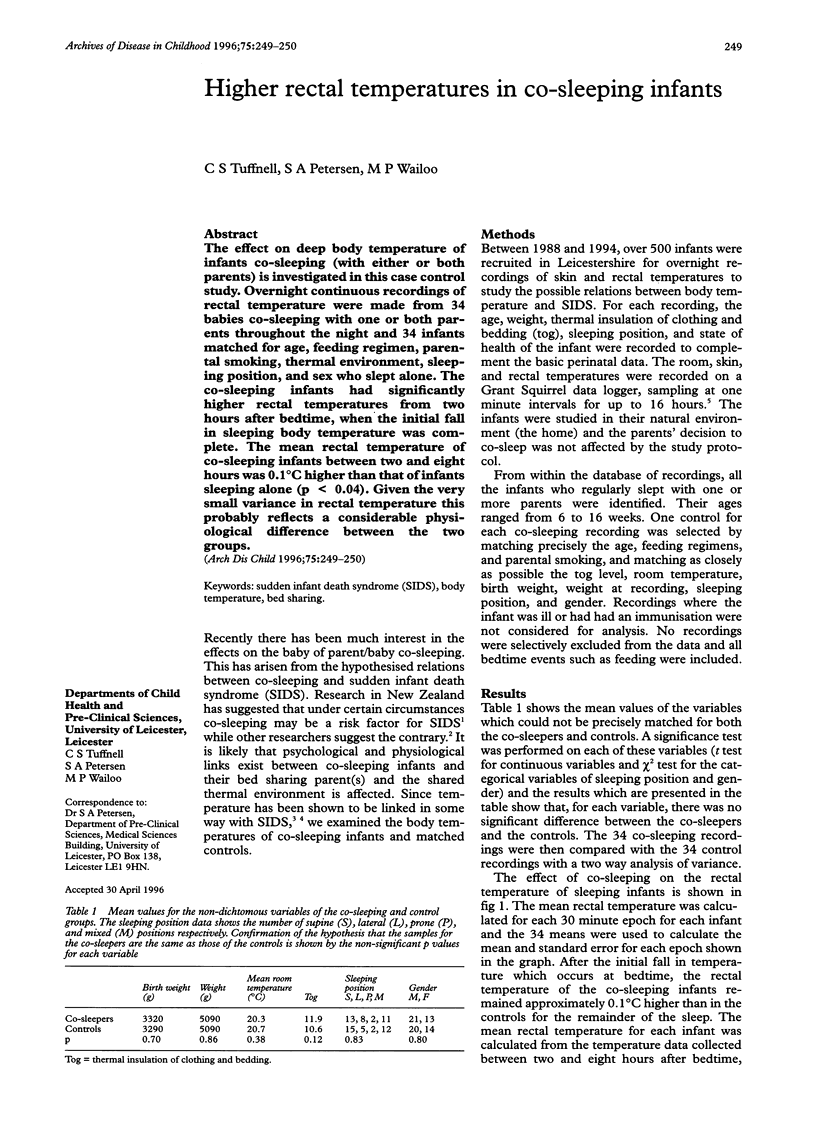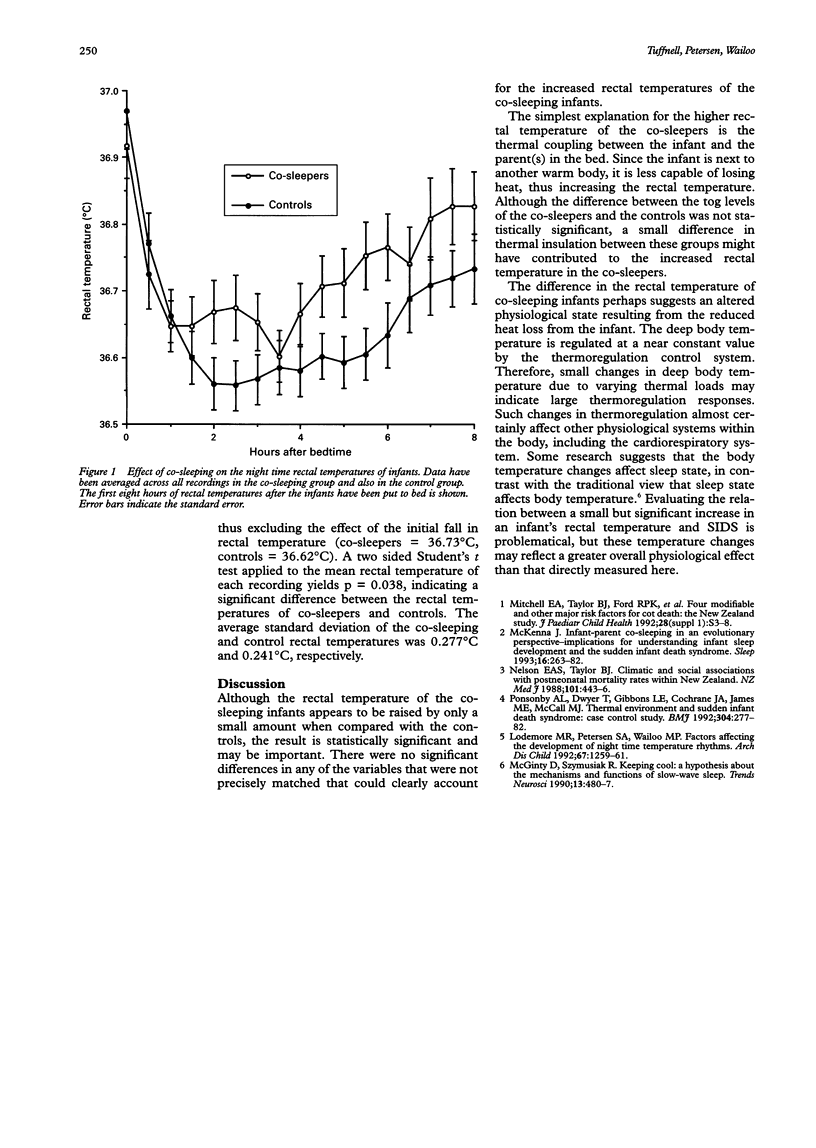Abstract
The effect on deep body temperature of infants co-sleeping (with either or both parents) is investigated in this case control study. Overnight continuous recordings of rectal temperature were made from 34 babies co-sleeping with one or both parents throughout the night and 34 infants matched for age, feeding regimen, parental smoking, thermal environment, sleeping position, and sex who slept alone. The co-sleeping infants had significantly higher rectal temperatures from two hours after bedtime, when the initial fall in sleeping body temperature was complete. The mean rectal temperature of co-sleeping infants between two and eight hours was 0.1 degree C higher than that of infants sleeping alone (p < 0.04). Given the very small variance in rectal temperature this probably reflects a considerable physiological difference between the two groups.
Full text
PDF

Selected References
These references are in PubMed. This may not be the complete list of references from this article.
- Lodemore M. R., Petersen S. A., Wailoo M. P. Factors affecting the development of night time temperature rhythms. Arch Dis Child. 1992 Oct;67(10):1259–1261. doi: 10.1136/adc.67.10.1259. [DOI] [PMC free article] [PubMed] [Google Scholar]
- McGinty D., Szymusiak R. Keeping cool: a hypothesis about the mechanisms and functions of slow-wave sleep. Trends Neurosci. 1990 Dec;13(12):480–487. doi: 10.1016/0166-2236(90)90081-k. [DOI] [PubMed] [Google Scholar]
- McKenna J. J., Thoman E. B., Anders T. F., Sadeh A., Schechtman V. L., Glotzbach S. F. Infant-parent co-sleeping in an evolutionary perspective: implications for understanding infant sleep development and the sudden infant death syndrome. Sleep. 1993 Apr;16(3):263–282. doi: 10.1093/sleep/16.3.263. [DOI] [PubMed] [Google Scholar]
- Mitchell E. A., Taylor B. J., Ford R. P., Stewart A. W., Becroft D. M., Thompson J. M., Scragg R., Hassall I. B., Barry D. M., Allen E. M. Four modifiable and other major risk factors for cot death: the New Zealand study. J Paediatr Child Health. 1992;28 (Suppl 1):S3–S8. doi: 10.1111/j.1440-1754.1992.tb02729.x. [DOI] [PubMed] [Google Scholar]
- Nelson E. A., Taylor B. J. Climatic and social associations with postneonatal mortality rates within New Zealand. N Z Med J. 1988 Jul 13;101(849):443–446. [PubMed] [Google Scholar]
- Ponsonby A. L., Dwyer T., Gibbons L. E., Cochrane J. A., Jones M. E., McCall M. J. Thermal environment and sudden infant death syndrome: case-control study. BMJ. 1992 Feb 1;304(6822):277–282. doi: 10.1136/bmj.304.6822.277. [DOI] [PMC free article] [PubMed] [Google Scholar]


